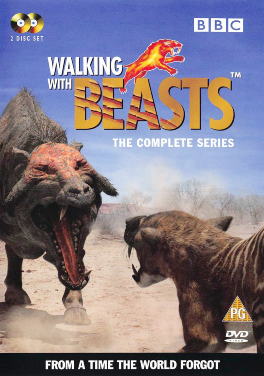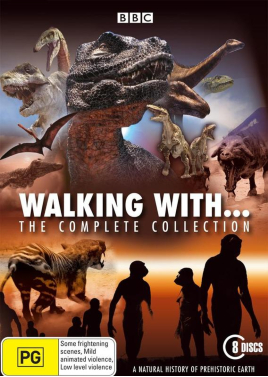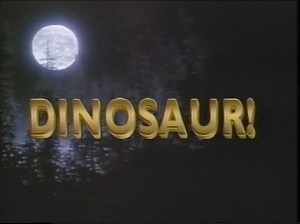
Framestore Limited(The) is a British animation and visual effects studio based in Chancery Lane in London. Formed in 1986, it acquired and subsequently merged with the Computer Film Company in 1997. Framestore specialises in effects for film, television, video games, and other media. It is the largest production house within Europe, employing roughly 2500 staff — 1000 in London, and 1500 across offices in Chicago, New York, Los Angeles, Montreal, Vancouver, Mumbai and Beijing.

Animal Logic is an Australian animation and visual effects digital studio based at Disney Studios in Sydney, New South Wales in Australia, Vancouver in Canada, and Rideback Ranch in Los Angeles, California. Established in 1991, Animal Logic has produced visual effects and animation for feature films such as the Academy Award-winning Happy Feet, Legend of the Guardians: The Owls of Ga'Hoole, Walking with Dinosaurs 3D,The Lego Movie andPeter Rabbit. The company was also recognised for its work as lead visual effects vendor on Baz Luhrmann's The Great Gatsby, which won Outstanding Achievement in Visual Effects at the 3rd AACTA Awards ceremony. In 2018, Peter Rabbit was presented with a range of accolades, including the AACTA Award for Best Visual Effects or Animation, and Australian Production Design Guild Awards (APDG) in Visual Effects Design and Drawing, Concept Illustration & Concept Models for Screen. Most recently, the company has produced work for the Warner Animation Group's The Lego Movie 2: The Second Part and Marvel Studios' Captain Marvel. It is a subsidiary of Netflix.

Walking with Beasts, marketed as Walking with Prehistoric Beasts in North America, is a 2001 six-part nature documentary television miniseries created by Impossible Pictures and produced by the BBC Studios Science Unit, the Discovery Channel, ProSieben and TV Asahi. The sequel to the 1999 miniseries Walking with Dinosaurs, Walking with Beasts explores the life in the Cenozoic era, after the extinction of the non-avian dinosaurs, particularly focusing on the rise of the mammals to dominance. The UK version of the series is narrated by Kenneth Branagh, who also narrated Walking with Dinosaurs, and the US version is narrated by Stockard Channing.

Rhythm & Hues Studios was an American visual effects and animation company that received the Academy Award for Best Visual Effects in 1995 for Babe, in 2008 for The Golden Compass, and in 2013 for Life of Pi. It also received four Scientific and Technical Academy Awards.

Phil Tippett is an American movie director and Oscar and Emmy Award-winning visual effects supervisor and producer, who specializes in creature design, stop-motion and computerized character animation. Over his career, he has assisted ILM and DreamWorks, and in 1984 formed his own company, Tippett Studio.
Tippett Studio is an American visual effects company specializing in computer-generated imagery (CGI) for films and television commercials. The studio has created visual effects and animations on over fifty feature films and commercials, garnering an Academy Award, four Clio Awards and two Emmy Awards. The company currently consists of approximately 150 employees, with offices located in Berkeley, California.

Walking with Monsters – Life Before Dinosaurs, marketed as Before the Dinosaurs – Walking with Monsters in North America, is a 2005 three-part nature documentary television miniseries created by Impossible Pictures and produced by the BBC Studios Science Unit, the Discovery Channel, ProSieben and France 3. Walking with Monsters explores life in the Paleozoic era, showcasing the early development of groups such as arthropods, fish, amphibians, reptiles and synapsids. Like its predecessors Walking with Dinosaurs (1999) and Walking with Beasts (2001), Walking with Monsters is narrated by Kenneth Branagh.

Sony Pictures Imageworks Inc. is a Canadian visual effects and computer animation studio headquartered in Vancouver, British Columbia and Montréal, Québec, with an additional office on the Sony Pictures Studios lot in Culver City, California. SPI is a unit of Sony Pictures Entertainment's Motion Picture Group.
Pixomondo (PXO) is an Academy and Emmy award-winning international visual effects and virtual production company with studios in Los Angeles, Frankfurt, Stuttgart, Vancouver, Toronto, Montreal, and London. The company provides virtual production and visual effects for feature films, television, and commercials. As of 2019, PXO employs over 655 people worldwide.
DNEG is a British visual effects, computer animation and stereo conversion studio that was founded in 1998 in London, and rebranded as DNEG in 2014 after a merger with Indian VFX company Prime Focus; it was named after the letters "D" and "Neg" from their former name.

Journey to the Center of the Earth is a 2008 American 3D science fantasy action-adventure film directed by Eric Brevig and starring Brendan Fraser in the main role, Josh Hutcherson, Anita Briem, and Seth Meyers. Produced by New Line Cinema, it is an adaptation of Jules Verne's 1864 novel, and was released in 3D theaters by Warner Bros. Pictures on July 11, 2008.

Walking with... is a palaeontology media franchise produced and broadcast by the BBC Studios Science Unit. The franchise began with the series Walking with Dinosaurs (1999), created by Tim Haines. By far the most watched science programme in British television during the 20th century, Walking with Dinosaurs spawned companion material and four sequel series: Walking with Beasts (2001), Walking with Cavemen (2003), Sea Monsters (2003) and Walking with Monsters (2005). Each series uses a combination of computer-generated imagery and animatronics, incorporated with live action footage shot at various locations, to portray prehistoric animals in the style of a traditional nature documentary.

Cinesite is an independent, multinational business which provides services to the media and entertainment industries. Its head office in London opened for business in 1994, initially offering services in visual effects for film and television, subsequently expanding to include animation.

Jam Filled Entertainment is a Canadian animation studio based in Ottawa, Ontario with additional facilities in Toronto and Halifax and is a division of Boat Rocker Media. It is best known for animating Thomas & Friends between 2013 and 2021 and Nicktoons such as The Loud House, and its spinoff The Casagrandes.

Dinosaur! is a 1985 American television documentary film about dinosaurs. It was first broadcast in the United States on November 5, 1985, on CBS. Directed by Robert Guenette and written by Steven Paul Mark, Dinosaur! was hosted by the American actor Christopher Reeve, who some years before had played the leading role of Superman.

CafeFX was an award-winning feature film visual effects facility offering visual effects production and supervision, CG character creation, and 3D animation. Founded in 1993 by Jeff Barnes and David Ebner, CafeFX was located in a 36,000-square-foot (3,300 m2) studio on an eight-acre campus in Santa Maria in Santa Barbara County. Its commercial and music video division, Santa Monica-based The Syndicate, was a creative design, branding services, and digital production studio, specializing in live action direction, visual effects, animation, motion graphics, and telecine. CafeFX and The Syndicate were held by umbrella corporation ComputerCafe Group, which has also established Sententia Entertainment, a long form production company.

Method Studios is a visual effects company launched in 1999 in Los Angeles, California with facilities in New York, Atlanta, Vancouver, San Francisco, Melbourne, Montreal, and Pune. The company provides production and post-production services including conceptual design, look development, on-set supervision, 3D animation/CGI, matte painting, AR/VR, compositing and finishing.

Rodeo FX is a high-end visual effects and creative company offering services in visual effects, advertising, animation, and experiential. The company currently has studios in Montreal, Quebec City, Toronto, Vancouver, Paris and Los Angeles.

The Moving Picture Company (MPC) is a British multinational company providing visual effects, CG, animation, motion design and other services for the film, TV, brand experience and advertising industries.

Matthew Simon Drummond is an Australian film director, screenwriter and visual effects supervisor.

















